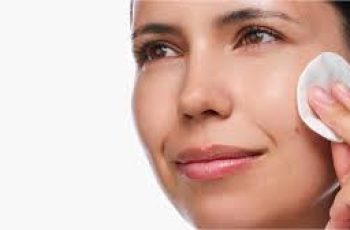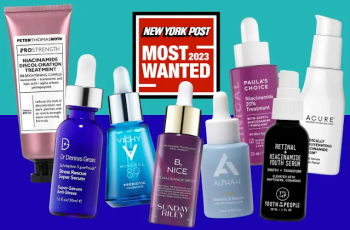
Shaving advice and skin care for men
For many, shaving is a dice-roll of an experience – an effort that seemingly at random results in nicks, cuts, razor burn, or dreaded ingrown hairs. Shaving doesn’t need to be this way. With some knowledge about proper technique, quality products, and caring for your skin, you can make shaving an enjoyable part of your routine while avoiding the common side-effects.
In this ultimate guide to a better shave, we’ll walk through the entire process from start to finish. We’ll discuss the importance of using a quality shave product to provide protection and glide for your razor. We’ll cover proper shaving techniques, like shaving with the grain in the direction your hair grows, using light pressure, and taking care around contours and angles. We’ll also provide tips to combat common shaving woes, like how to avoid razor bumps and ingrown hairs.
We’ll explain why using an aftershave is important too. Throughout, you’ll get our top picks for shaving products that dermatologists recommend based on skin type.
Take our quiz, and you’ll be one step closer to perfect skin health!
How to wash your face when shaving
It’s always a good idea to clean the face thoroughly before shaving, and a nice warm shower can be a great way to open the facial pores to prevent ingrown hairs after shaving. (3)
If you have a low pH cleanser like Nolio salicylic acid cleanser, use it before shaving. (6) Make sure the water you use isn’t too hot.
If you don’t take a shower before shaving, make sure to at least use your AM cleanse from your skin care routine to remove oils and bacteria from the skin.
For a more comprehensive analysis why you should wash your face before shaving, check out this blog.
Can you shave without shaving cream?
You can shave without traditional shaving creams, however I recommend to my patients to replace shaving cream with a facial cleansing product more suitable to your skin type. (2)
Traditional shaving cream is designed to soften hairs, making them easier to manipulate and cut with razors. The issue is that when hairs are softened, they often lose the pointed edges that penetrate the skin and can lead to ingrown hairs AKA razor bumps.(9,10)
A low pH cleanser can help soften the hairs and prevent ingrown hairs. We do not advise using regular bars of soap as shaving cream alternatives, they can irritate skin when used that way. Some shampoos are safe to shave with for people who do not usually get ingrown hairs, but that should be a last resort. (7)
Some people might benefit from a rich moisturizer, a foamy low pH cleanser, or a creamy cleanser. The best choice depends on your skin type and vulnerability to ingrown hairs or concerns like eczema or psoriasis.
To find the best cleanser for you, take the skin type quiz and use the AM cleanser in the custom skincare routine that you will be recommended after finding your skin type.
Best shaving cream alternatives
There are many great cleansers, moisturizers, and cleansing oils that can be used in place of traditional shaving cream.
Many types of skin care products will improve the shortcomings of traditional shaving cream with ingredients tailored to your specific needs. You just need to find one that matches your skin concerns.
Here are a few of our favorite options, be sure to look for your skin type octagon on product pages:
how to shave your face
How to shave your face
Once you have either showered and/or used your AM cleanser, applied your shaving cream alternative, you are in the best position to shave your face without side-effects. (7,8) Now, technique is of the utmost importance.
It doesn’t matter where you start, but you always want to be shaving “with the grain,” from the cheek towards the neck, especially when using a non-electric, manual razor. (3,4)
Shaving downwards protects the natural edge of hair follicles, allowing them to more easily resurface (desquamate) in the future. (11)
If you are having trouble shaving some of the softer parts of your face like your cheeks, try puffing out your cheeks while shaving along the grain. This can help prevent cuts.
When shaving below the chin, continue to move the razor downwards along the grain. Ingrown hairs can occur on the neck as well.
If you are prone to ingrown hairs on your face (pseudofolliculitis barbae), we advise avoiding a manual razor in favor of an electric razor.
Electric razors do not cut as closely to the skin as manual razors, leaving a bit more of the hair strand above the surface of the skin. This can make an enormous difference to many people who commonly suffer from ingrown hairs. (9)
If you are looking to shave your eyebrows for any reason, you would want to move your razor from the direction of your nose to the direction of your temples to follow the natural grain of the hairs.
How to shave your legs
Shaving your legs is a similar ordeal to shaving your face. The most important things to keep in mind when shaving your legs are using a good moisturizer/shaving cream alternative, and shaving along the grain.
Shave along the grain on the legs so you are less likely to experience significant ingrown hairs on the legs. (14) If you are looking for a close shave with no evidence of hairs on your legs, shave against the grain, but if you do so, make sure you use a good cleanser to get excess shaving product off of your skin and exfoliators to prevent clogged pores.
preventing ingrown hairs
Preventing ingrown hair (pseudofolliculitis)
The key to preventing ingrown hairs is making sure the skin is clean, pores are open, and that the hair follicles are moisturized while avoiding too close a shave. (9-14)
If you use the right products and techniques for your hair texture, avoiding pseudofolliculitis becomes much easier. For a dedicated blog all about strategies to prevent and treat ingrown hairs AKA “razor bumps,” check out this blog!
Best Products for Ingrown Hairs
If you currently suffer from ingrown hairs, these are a few of our recommendations for treatment and future prevention of pseudofolliculitis barbae:
What does aftershave do?
What does aftershave do?
Aftershave is usually made of astringent ingredients like alcohols or plants like witch hazel, which are used to constrict pores, sanitize applied areas, and assist in exfoliation as well as dry the skin. (2) Aftershave is a lot like a toner.
These products are designed to remove any debris from the skin to keep it clean after shaving. If you are using both a toner and an aftershave, use the toner before the aftershave.
The drying and pore constricting properties of astringents mean they are not the best for every skin type. If you are prone to ingrown hairs, have dry or sensitive skin, then astringent aftershaves might not be for you.
Fortunately, there are alternatives to typical aftershaves.
In general, the most important thing to do after shaving is to use a product that removes any debris or leftover products from earlier stages in shaving. (6) These can include various cleansing oils, micellar cleansers, or even your daily PM cleanser.
If you are wondering why you need both an AM and PM cleanser, check out this blog.
The reason you do not want to use your AM cleanser a second time (after using it before shaving) is because AM cleansers are often low pH, and overuse of an acidic product on the skin can result in stinging or burning. (15) To avoid stinging or burning, follow up shaving with your PM cleanser instead of your AM cleanser.
Best skin care products to use after shaving
Here we’ve put together some of our favorite post-shave products for various skin types that might not benefit from traditional aftershave. Be sure to take the skin type quiz to find your skin type octagon on product pages!
Should you shave before or after you get fillers?
If you wake up the morning of your filler appointment at the dermatologist with a beard, you might be wondering if you need to shave before your injection.
It is important to specify that there is no medical reason you need to shave, however in my experience as a dermatologist it makes the injection site more visible when the area is shaved. Another benefit of shaving before injections is a lower risk of infection.
That being said, for the sake of visibility, we recommend shaving either the day before or the morning of your filler appointment. Note that fillers should not lead to ingrown hairs if you’ve just shaved.
Before Botox, shaving or not makes no difference.
Treating shaving nicks and cuts
If you happen to cut or slightly nick your skin while shaving, there are many astringent ingredient based products that can be used to quickly aid in healing that cut.
Astringents are great for regulating moisture, lowering skin pH, killing bacteria, and tightening pores. (16, 17)
If you apply an astringent right away on the affected area, you should notice a reduction of bleeding and wound size almost immediately.
There are products specifically designed for razor cuts, but in many cases a toner will do the trick.
It is important to note that if your skin is properly moisturized and you apply light pressure with the razor while shaving, cuts are less likely to occur.
Here are some of our favorite astringent toners to help you with cuts from shaving:
General takeaways and advice
Shaving products and techniques depend greatly on your skin type and hair texture. Finding the right products for your skin to make sure you cleanse and moisturize appropriately before and after your shave makes a huge difference in preventing concerns like ingrown hairs.
To find the best products for your specific skin type, take our quiz to receive a personalized recommended regimen. We know that our regimen will bring you closer to perfect skin.


